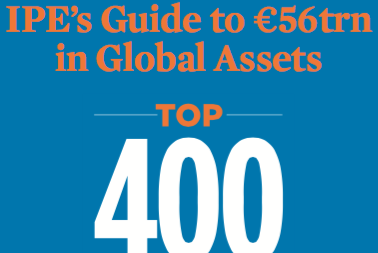Institutional investors in Europe and the Middle East (EMEA) have a “more voracious” appetite for high-yield corporate debt than those on a global level, but they lag when it comes to alternatives, according to a survey by Allianz Global Investors (Allianz GI).
For the fourth year, the asset manager has surveyed hundreds of institutional investors across the world on their attitudes to risk, portfolios and asset allocation.
This year, the report covers 755 investors across 23 countries representing more than $26trn (€23trn) in assets under management.
It is split by region, with 250 respondents in the Americas, 250 in the EMEA region and 255 in Asia-Pacific.
One-third of the respondents for the EMEA were pension providers, with insurance companies the next biggest category (27%).
According to AllianzGI, the study shows global investors have hardly changed their risk-management strategies since the financial crisis in 2008, yet investors in the EMEA have.
The use of duration management in the EMEA increased by 15 percentage points compared with pre-crisis levels (43% to 58%).
Diversification approaches – by geography and by asset class – remain prevalent, however.
“This is understandable,” according to AllianzGI, “given that institutional investors in the EMEA region consider market volatility to be among the biggest investment concerns, along with monetary policy and the low-yield environment.”
EMEA investors are less concerned about market volatility than institutional investors globally (36% versus 42%), but they view the low-yield environment as a greater challenge than do their global peers (29% versus 24%).
In terms of asset allocation, equities are the preferred asset class for investors in the EMEA, as they are globally, although with a strong home-region bias.
High-yield corporate debt is the second most attractive asset class among EMEA investors.
“This highlights the thirst for yield in the region and hints at the increased risk EMEA investors are willing to stomach for performance,” AllianzGI said.
“To further underline this trend, they have a larger appetite for private equity than their global counterparts (19% versus 12% globally).”
The asset manager said that, despite this, investors in the EMEA region lagged the rest of the world when it came to investing in alternative assets.
Corporate high-yield debt was one of the three top asset classes EMEA investors said they would go long on/buy, selected by 28% of respondents.
The asset class did not make the top three list for investors globally.
As concerns alternatives, 65% of institutional investors in the EMEA invest in this asset class compared with 74% worldwide.
AllianzGI said it was interesting that fewer EMEA investors than globally believed alternatives could help as a source of diversification (18% versus 25%).
Another finding of the survey was that institutional investors primarily incorporate ESG principles into the way they invest for ethical reasons.
The desire to minimise risk was more of a driver for this for EMEA investors than worldwide (by 2%), while the “demand of corporate policy” was less of a factor.
In terms of threats to portfolio performance, European institutional investors were most concerned about event risk, according to AllianzGI.
It suggested this could be due to concerns about terrorist attacks, as well as the upcoming EU referendum in the UK.









No comments yet